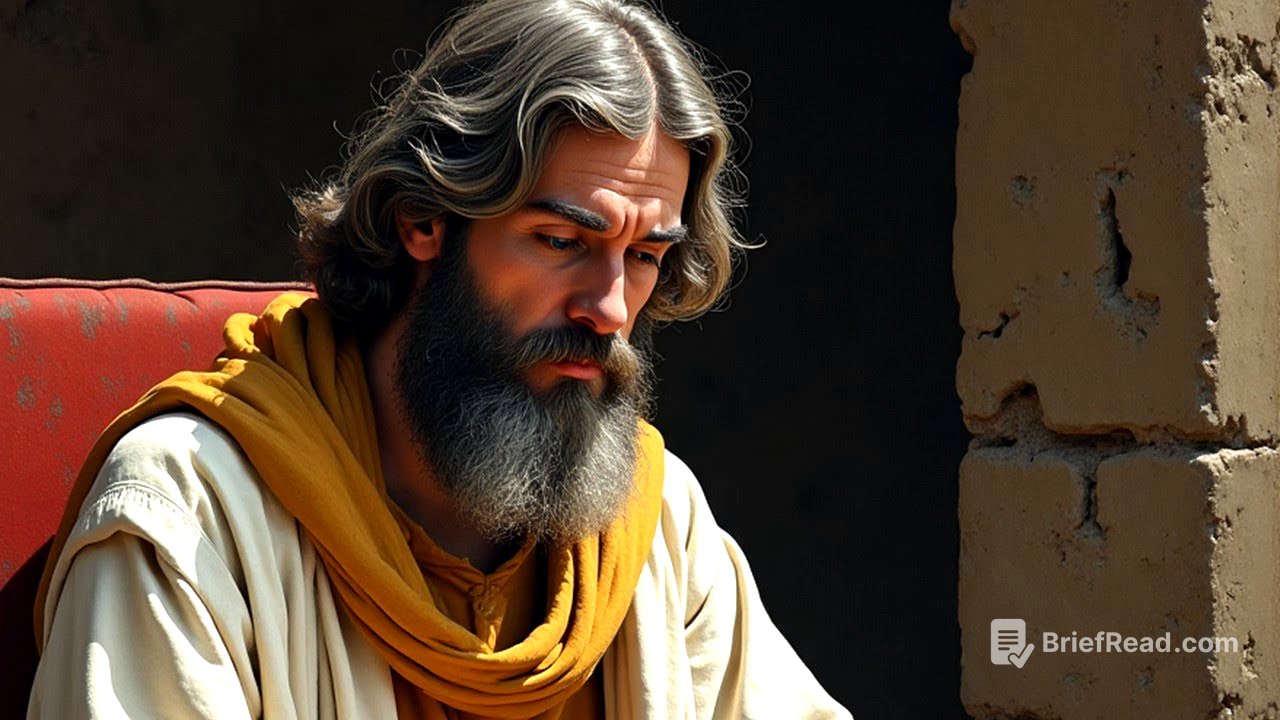TLDR;
This video explores whether St. John of Damascus wrote the section on the "Heresy of the Ishmaelites" in his book "Concerning Heresies," or if it was added later. The analysis considers the content, tone, and structure of the text, comparing it to St. John's other works. The video uses AI-assisted research and concludes that the section was likely a later interpolation, suggesting Islam was not fully formed in St. John's time.
- The section on the "Heresy of the Ishmaelites" may have been added later.
- If St. John didn't write it, Islam may not have been fully formed in his time.
- The text still uses "McMed," suggesting the change to "Muhammad" came later.
Introduction: The Question of Authorship [0:03]
The video addresses the question of whether St. John of Damascus authored the section on the "Heresy of the Ishmaelites" in his book "Concerning Heresies," or if it was a later addition. The speaker acknowledges using AI in the research process, alongside personal interpretations and knowledge. The idea that St. John's work might contain interpolations was initially raised by Professor Robert Kerr. The speaker aims to evaluate this possibility, noting that anachronisms and inconsistencies can suggest later additions to a text.
The Significance of Authorship [3:05]
The speaker highlights the importance of determining the true author of the section on the "Heresy of the Ishmaelites." If St. John of Damascus did not write it, it suggests that Islam was not yet a distinct and fully formed religion during his time. The speaker notes that many Islamic concepts have roots in Christianity, and in the 730s, it may not have been obvious that Islam was a separate religion or even a heresy. The speaker points to seventh-century coins featuring both Muhammad's name and a cross, indicating a potential blending of religious ideas.
Content and Tone Analysis [5:45]
The speaker analyses the content of the section, noting that it characterises Islam as a Christian heresy, focusing on the denial of Christ's divinity and crucifixion, the nature of Muhammad's prophethood, and critiques of the Quran and Islamic practices. If St. John wrote this in the 730s, it suggests Islam was already well-formed. The speaker also discusses the tone of the section, which is highly polemical, mocking, and rhetorically aggressive, contrasting with St. John's more measured theological treatises.
Contrasting Features and Titles [7:46]
The speaker compares the features and titles of the section on the "Heresy of the Ishmaelites" with St. John's other works. The section is polemical and focused on heresies, while the rest of his material is systematic theology and apologetics. The tone of the Ishmaelite section is satirical and combative, whereas St. John's other writings are scholarly, pastoral, and philosophical. The structure of the Ishmaelite section is brief and anecdotal, lacking citations, while St. John's other writings are structured with references to scripture and church fathers. The language in the Ishmaelite section is simplified and colloquial, while the rest of his work uses technical philosophical Greek. The intended audience for the Ishmaelite section is likely lay Christians under Islamic rule, while the rest of his work is aimed at educated clergy and theologians.
Evidence of Interpolation [11:06]
The speaker presents four types of evidence suggesting interpolation: stylistic discrepancies, anachronisms, manuscript variance, and theological inconsistencies. The Ishmaelite section is unusually long compared to other heresy entries. Some references to Islamic practices and beliefs may reflect later developments in Islam. Some manuscripts omit or abbreviate the Ishmaelite section. The mocking tone and lack of theological nuance contrast with St. John's philosophical approach.
Stylistic Discrepancies and Theological Inconsistencies [12:52]
The speaker elaborates on stylistic discrepancies and theological inconsistencies, highlighting the mocking tone and lack of theological nuance in the Ishmaelite section. St. John maintained a scholarly, pastoral, and philosophical approach even during the iconoclasm period, despite personal insults. The speaker contrasts this with the polemical style used in the section on Islam, suggesting a different author.
Examples of Contrasting Passages [15:15]
The speaker compares a passage from St. John's "Apologia Against Those Who Decry Holy Images" with a passage from the "Heresy of the Ishmaelites." The former is systematic theology, apologetics, scholarly, pastoral, and philosophical, using technical philosophical Greek and biblical citations. The latter is polemical, satirical, and anecdotal, using language like "ridiculous" and "spinning dreams," which is uncharacteristic of St. John's typical writing.
Anachronisms [21:31]
The speaker identifies anachronisms in the Ishmaelite section, such as a scene where God asks Jesus in heaven whether he claimed to be divine, which resembles post-Quranic hadith rather than direct Quranic text. This suggests later doctrinal developments in Islamic theology. The speaker also points out the statement that Muslims "abominate the cross," which is unlikely given St. John's father's high office under the caliph and the presence of crosses on coins during that time.
Mecca's Location and Manuscript Variance [24:07]
The speaker discusses the description of Muslims rubbing themselves against a stone in their Kaaba, questioning whether this is anachronistic given that the Byzantine-Arabic chronicle of 741 places Mecca between Ur and Haran, not in the Hijaz. The speaker also notes that the Ishmaelite heresy appears as entry 101 in some versions, throwing off the round number of 100 heresies. The earliest complete manuscript dates from the 10th to 11th centuries, and several Greek manuscripts omit the Ishmaelite section entirely, suggesting later additions.
Late Additions and the Use of "McMed" [28:38]
The speaker suggests that the additions to St. John's work were likely made in the 10th and 11th centuries, when Islam was becoming more fully formed. The speaker finds it interesting that even the earliest complete manuscript from the 10th century still uses the word "McMed" instead of "Muhammad," suggesting that the vocalisation of "Muhammad" came later.
Conclusion [31:35]
In conclusion, the speaker believes that St. John of Damascus did not write the section on the "Heresy of the Ishmaelites," and that it was added later. This suggests that Islam had not fully emerged in his time. The speaker also notes that the later writers did not mention the content of the inscription in the Dome of the Rock. Despite the late addition, the text still uses "McMed," indicating that the change to "Muhammad" came very late.









